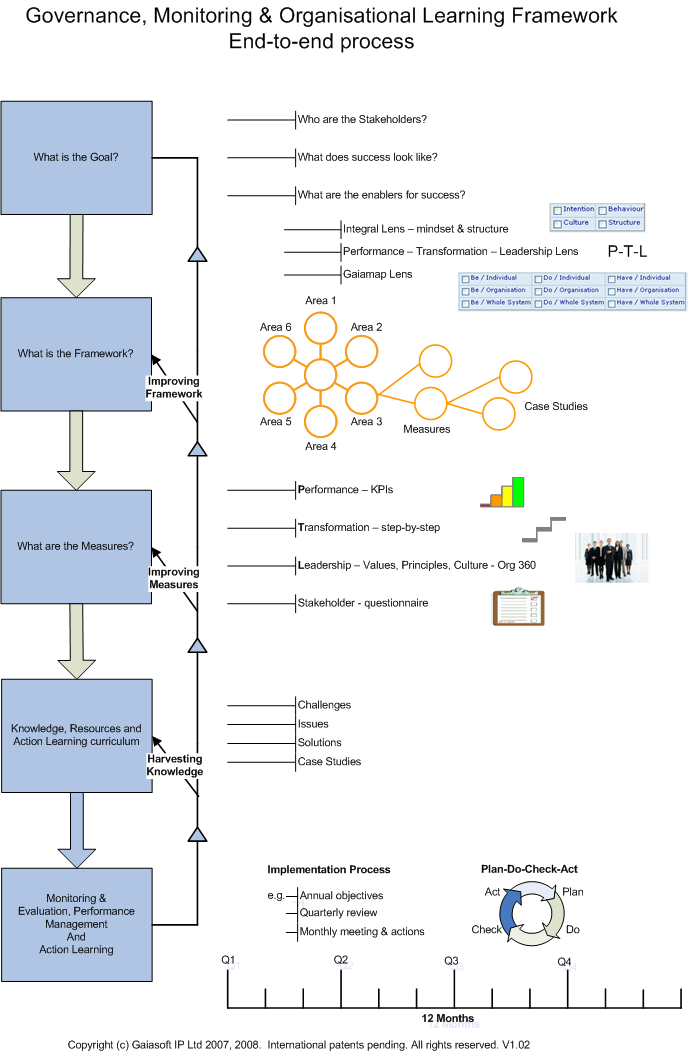- Red/Yellow/Green or
- Non-Compliant/Partially Compliant/Compliant
| Requirement | Why it's important | R |
Y |
G |
| 1. Accountability | Accountability provides the basis for maintaining standards, driving improvement and change. | |||
| 2. Measuring Performance | Measurement provides the basis for accountability. Performance measures indicate whether a process is delivering. Performance measures are most relevant to a stable organisation. Where structural and cultural transformation is required, the key accountability of leaders may be for transformation and for culture and values. | |||
| 3. Measuring transformation | Transformation of an organisation depends on many projects and changes – structures, processes, systems. The management system must be able to measure the transformation of structures, processes and systems | |||
| 4. Measuring culture | Transformation of organisations depends on culture, on trust, on collaboration. The management system must be able to measure the culture of the organisation as it is and the gap between current culture and desired culture. | |||
| 5. Action Management | Action management is the driver of results and the engine of continuous improvement (through the plan-do-check-act cycle of quality management). | |||
| 6. Knowledge: Challenges, Solutions & Case Stories | Knowledge is organised according to the measure it impacts, the 80/20 challenges which must be met to perform in that measure and the 80/20 solutions (80/20 Challenges refer to the small number of key challenges which are barriers to performance. 80/20 solutions refer to the small number of key solutions that address each challenge. Case studies refer to the positive proof points which demonstrate solutions), supported by case studies. | |||
| 7. Reusable templates | Reusable templates consist of measures, knowledge and action learning resources which are used to drive change through a performance management process. | |||
| 8. Fractal – multiple levels – National; Provincial; Local | Reusable templates appropriate to different types and levels of organisation, for example business and government at national, provincial and local levels. Management and knowledge management systems enable collaboration and learning between types and levels of organisation. This is a requirement due to the increasing interdependency between different sectors and organisation types. | |||
| 9. Lenses – multiple views for different stakeholders | Different stakeholders have different perspectives on the transition – for example, financial, environmental, compliance and regulatory. | |||
| 10. Interagency / multi stakeholder – lenses, filters, content | Different stakeholders and supply chain partners require confidential subsets of shared information to allow optimisation and tuning of performance, for example across a network of government agencies or businesses in a supply chain. |











